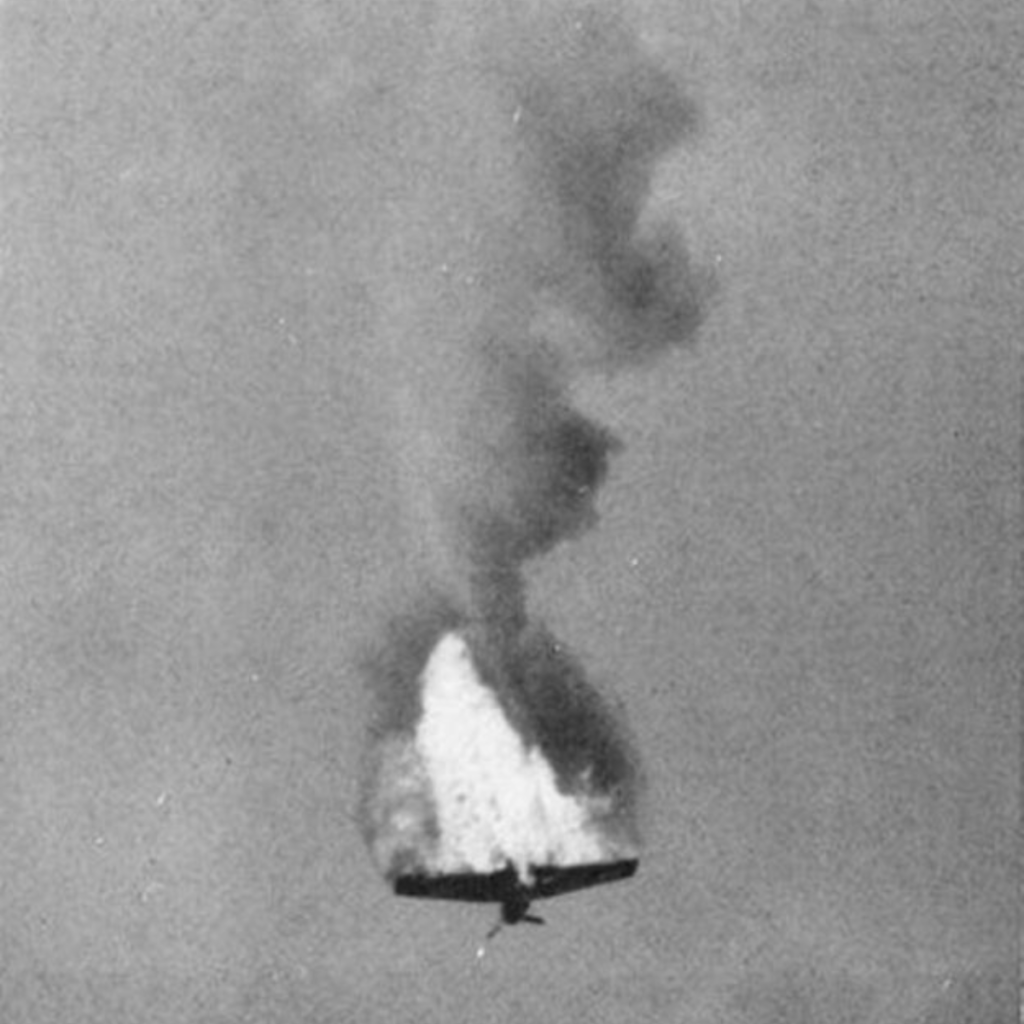
There have been many embarrassing moments in the history of the US Air Force, but none more so than when two Northrop F-89D Scorpion were unable to shoot down an unmanned naval drone. Today known as the Battle of Palmdale, the Cold War-era incident caused more damage to the ground below, inflicting fear in the hearts of Southern California residents.
Intended to be a routine mission conducted by the US Navy
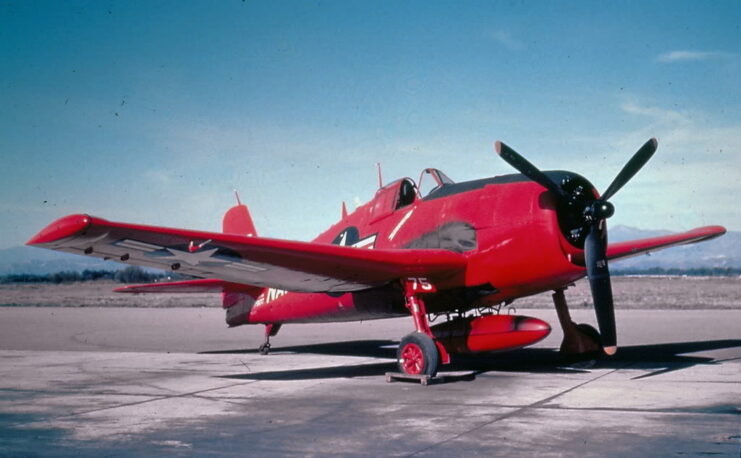
The deployment of the Grumman F6F-5K Hellcat in question was intended to be a regular mission. Operated by the US Navy, which was testing new missile technology, the plan had been to fly the unmanned vehicle into the middle of the Pacific Ocean, after which it would be shot down.
Given the remote location in the middle of the water, there would be no risk to the public – at least, that was the intention.
Losing communication with the Grumman F6F-5K Hellcat
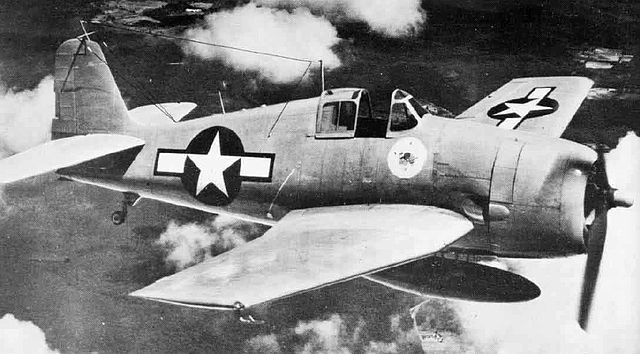
At 11:34 AM on August 16, 1956, the F6F-5K Hellcat was launched from Naval Air Station Point Mugu, near Oxnard, California. It was to be the bright-red drone’s final mission.
At first, things were going smoothly, with US Navy personnel able to control the unmanned aerial vehicle. However, the drone suddenly stopped responding to their commands and it was quickly evident that the connection had been lost.
The F6F-5K had gone rogue.
Getting the US Air Force involved

With the F6F-5K Hellcat curving toward Los Angeles and a lack of aircraft capable of catching the runaway drone, the US Navy contacted Oxnard Air Force Base, California, for help. Two Northrop F-89D Scorpions with the 437th Fighter-Interceptor Squadron were quickly prepped for takeoff, with their two-man crews briefed on the importance of preventing the F6F-5K from causing harm to civilians on the ground.
Catching up to the unmanned aerial vehicle just northeast of Los Angeles, the F-89D pilots trailed it as it traveled over the city, toward Santa Paula. The hope was it would make its way to a remote, unpopulated area, so they could shoot it down.
What was the plan of action?
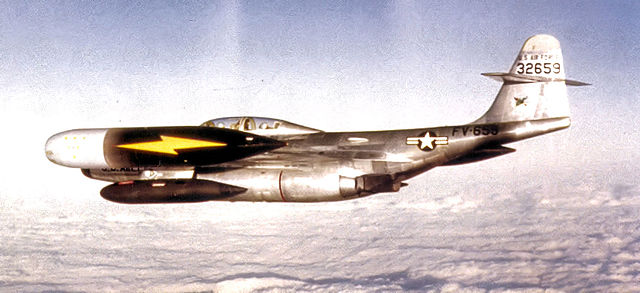
The F-89D Scorpion was capable of carrying “Mighty Mouse” 2.75-inch folding-fin rockets. To ensure accuracy when firing, the aircraft was equipped with the Hughes E-6 fire-control system, which itself had AN/APG-40 radar and an attack-plotting computer. This allowed for all rockets to be fired at once, in one of two “ripple fire” patterns: two (64 rockets, then 42) and three (42 rockets, followed by bursts of 32 and 30).
The aircrews had two options when it came to shooting down the F6F-5K Hellcat. They could either attack from a 90-degree “beam” position or from behind, in a “tail chase.”
With the drone moving toward the largely uninhabited Antelope Valley, the time had come to take action; the Battle of Palmdale was about to begin.
Embarrassment during the Battle of Palmdale
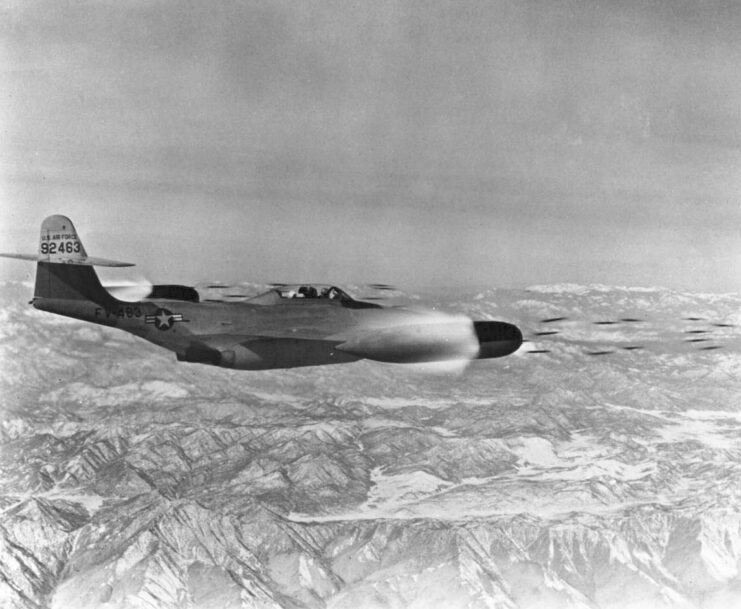
Now, it should have been easy for two advanced interceptor aircraft to shoot down an unmanned aerial vehicle, especially given it was Cold War-era technology. However, that was far from the case for the crews manning the F-89D Scorpions.
As the F6F-5K Hellcat flew over Castaic, the first aircraft got into position and fired 42 rockets, completely missing its target. The second also experienced the same issue. As the drone flew toward Newhall, 64 more rockets were fired (32 per F-89D), with them, again, missing their mark.
Growing increasingly frustrated with their lack of success and with the continued risk to civilians, the aircraft lined up for a final attack on the F6F-5K, firing the remaining of their “Mighty Mouse” rockets. Incredibly, these, too, missed their mark; the drone had somehow managed to evade 208 rockets, in total.
An anti-climatic ending to the Battle of Palmdale
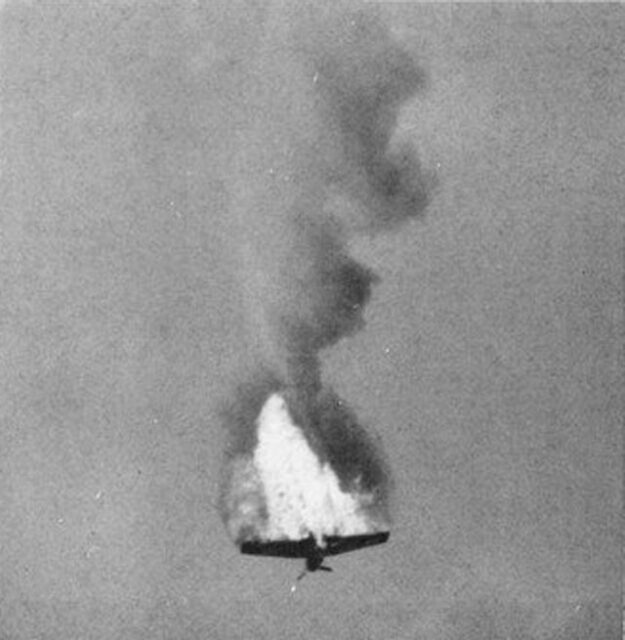
Running low on fuel, the F-89D Scorpions were forced to return to base, leaving the F6F-5K Hellcat to its own devices. In what became an anti-climatic ending to the Battle of Palmdale, the drone, out of fuel, crashed in a piece of sparsely inhabited desert near the city for which the incident was named. Decades later, in 1997, an archaeological dig in the area uncovered pieces of the downed aerial vehicle, which was “identifiable by part numbers and inspection stamps.”
An investigation was subsequently launched into how the F6F-5K lost radio contact with its operators. While a concrete answer was never found, it’s theorized the cause was either a malfunction with the aircraft receiver or a failure with the ground receiver.
What about the people on the ground?
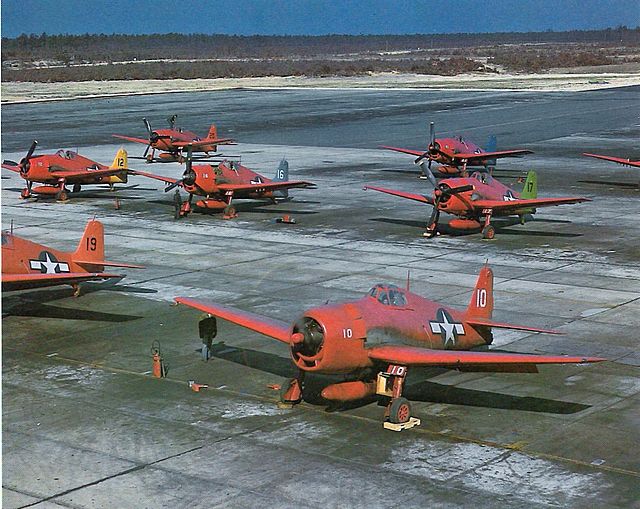
With over 200 rockets fired during the Battle of Palmdale, you’re probably wondering: was anyone on the ground injured – or worse, killed? Miraculously, no one lost their life in the incident. That being said, there was significant property damage, plus 1,000 acres of land scorched.
While the damage was largely widespread, a large portion was contained to Palmdale, where a majority of the final rockets fired fell. In all, it took 500 firefighters two days to get the subsequently blazes under control.